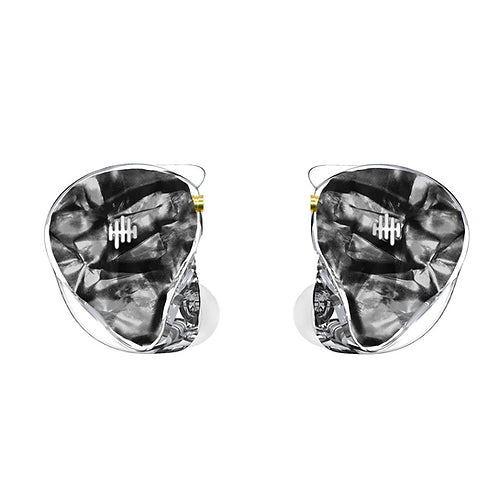In-Ear Monitors for Churches: The Pros and Cons

You may see them in the ears of news anchors, musicians, or even pastors: in-ear monitors. They’re a popular personal audio product, like earbuds, but they actually differ from those AirPods you use while working or while at the gym.
Initially developed for musicians and performers, they are generally used to help them hear themselves on stage without relying on traditional stage monitor speakers. Essentially, in-ear monitors (or IEMs) do a few things
- Block outside sound by using passive acoustic isolation
- Provide relatively high sound pressure levels with minimal distortion
- Remain in place, even if the person is moving around a lot
- Stay comfortable for long periods of time
With these needs in mind, they are designed uniquely and typically have the following features:
- A nozzle that pipes sound into the ear canal rather than an earbud that sits outside
- Memory foam or silicone ear tips for isolation
- Custom molding or a chassis shape that fits well in the concha
- An ear-hook or over-the-ear loop design to prevent pulling and/or movement
- A physical, wired connection
The Advantages and Disadvantages
There’s a lot of division between people who are for worship teams using IEMs and those who are against it for various reasons. Let’s dive into the reasons a team may choose to use them.
IEMs are the usual solution when the team has challenges managing on-stage volume levels. There are drawbacks, especially for smaller churches, and some pastors or worship leaders enjoy hearing the congregation. Let’s look at some of the positives of using IEMs for churches:
Reduced stage noise
This is probably the most obvious reason. Sound engineers can more easily do their job of mixing with less noise pollution. They can avoid feedback and reduce noise pollution from the stage—many times, the first few rows of the congregation can hear the monitors louder than the mains.
Portability
With wedge monitors, you need a truck or even a trailer if you plan on moving the monitors from venue to venue. This is not the case with IEMs. All of the receivers/transmitters can easily fit into a rack mount kit, which is incredibly portable.
Personal control
Another big advantage of IEMs. One person can be on the same monitor mix as someone else but still control the volume of their own channel via the belt pack/receiver. Plus, some companies make monitor systems that allow for your own in-ear monitor mix, which means you can have total control of what you hear.
Pretty great pros, right? Still, there are some disadvantages to IEMs, so let’s take a look at those:
Cost
This may be a hindrance for some, especially small churches with fewer funds than bigger churches. A quality setup of IEMs can cost anywhere from $300 to $1,000 per set of in-ear monitors. And if you want to add a rack mount kit for your transmitters, that’s another $50 per set, plus the cost of the rack itself.
Problems related to frequencies
Some church bands notice a few things, such as:
The performer’s signal is fuzzy. This can be fixed by replacing the battery on the receiver or moving the transmitters away from other electronic devices that can cause interference. The distance between transmitters and receivers also plays a part, but be sure to read and know the maximum distance that your IEM system can perform in.
No ambient sound
Worship leaders or even worship band lead singers may get their energy from the congregation. Some performers choose wedge-style monitors to solve this problem or will use one headphone instead of two.
Should Worship Leaders Use In-Ear Monitors?
Again, there is a lot of debate. Some choose to use IEMs as a way to remove a lot of the speakers from the stage (especially if it’s a small stage) or because it can get too loud on stage. Some worship leaders have claimed they wanted IEMs, got them, and then didn’t end up using them because they wanted to hear the congregation engaged in singing rather than a steady click or a specific instrument.
For smaller community worship, IEMs may not be a great choice, as they’re designed more for pro-touring environments and large auditoriums that require a consistent sound. Being able to listen and respond plays a huge role in community worship, especially for small worship bands or even pastors.
So, what’s the consensus? None! We advise looking at your unique situation, weighing the pros and cons of IEMs for your needs, and deciding what works best for your congregation.

